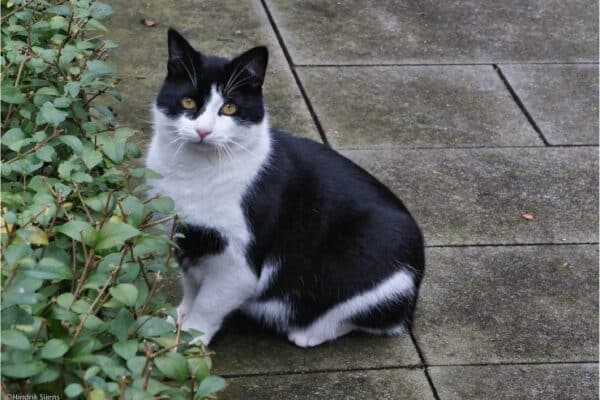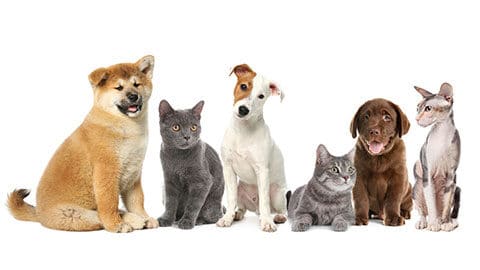
Myth #2 Fat Cats are Happy Cats
When you hear the words “fat cat” you smile, right? You think fat cats look happy or funny — you see social media pictures of enormous cats and get a kick out of it. You hear the saying about a person that “he’s a fat cat,” as though it’s something positive, and this reinforces the misconception. In fact, the words “fat” and “cat” and “happy” do not even belong together! I’ll go a step further and tell you that letting your cat become fat is a sure way to send them down a path of physical and emotional misery. I’ve been preaching this for years, along with many brilliant and dedicated veterinarians who have often had to contradict their fellow doctors.
I’ve written and talked on the radio about the dangers for a cat of being fat, which can actually be deadly as it can lead to urinary tract problem, diabetes, heart diseases, liver disease, and depression and lethargy. For example, Dr. Ernie Ward has worked hard for a long time to educate and warn cat owners — and even other veterinarians — about the obesity epidemic in cats (and dogs).
You may not realize that you are probably the cause of your cat being overweight — and have unintentionally caused your cat to be fat. This has happened because of what you’ve been feeding: dry food, probably. But the good news is that you can switch your cat to a quality canned food like Halo’s wet foods and the fat will come off and your cat’s health will be restored.
We have turned our cats into balloons by not respecting their proper nutrition as “obligate carnivores” — primarily meat-eating animals whose bodies weren’t designed to take in carbohydrates. The dry food we’ve all been told to feed — heavily processed carbohydrates (which I’ve come to call “kitty crack,” because of its harmful and addictive nature) throw off the cat’s metabolism, which converts all those carbs to fat. The fat is distributed everywhere, but also packs around their livers, causing “fatty liver disease.” Dr. Elizabeth Hodgkins, my co-host on CAT CHAT, has often explained that no cat should be on dry food, which in her years as a cat-only veterinarian she has seen make cats fat and is the underlying cause of their diabetes. She’s often explained that diabetes can be reversed if caught early, simply by removing dry food and replacing it with canned food. Dr. Elizabeth discusses how obesity can cause heart disease. And Dr. Donna Spector, my co-host on The Expert Vet, talks about human-caused diabetes, along with feeding canned food as the solution.
A normal, healthy cat should weigh around 10 lbs. Other than some of the big cat breeds like Maine Coons and Norwegian Forest cats, 9-10 lbs is an optimal weight for a domestic shorthair cat — your everyday kitty cat. We’re all lost sight of what the healthy normal cat looks like- sleek, slender, agile. The way a community cat looks — one who doesn’t live indoors eating only dry food. We have cats with swaying bellies who look pregnant (even though male), we have cats with swollen bellies, we have cats who barely run or play because they are fat.
Obesity has recently (finally?) been designated as a “disease” by the American Veterinary Medical Association (AVMA). This means that if your cat is overweight, he is sick. He has an illness. He needs to go to the doctor! Please talk to your vet about how to switch your cat safely to wet food — the right food for his body — and restore him to looking good and feeling good, being a truly happy cat, not a fat one. Your cat will thank you for it, for the rest of his long life.
—Tracie Hotchner
(Have a comment? Share it on Facebook.)
Halo is a sponsor on Radio Pet Lady Network, by our invitation.
photo credit: Hindrik S Feeling Guilty? via photopin (license)

